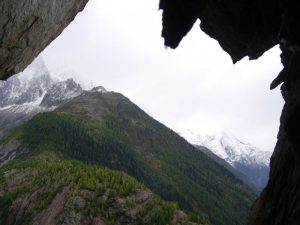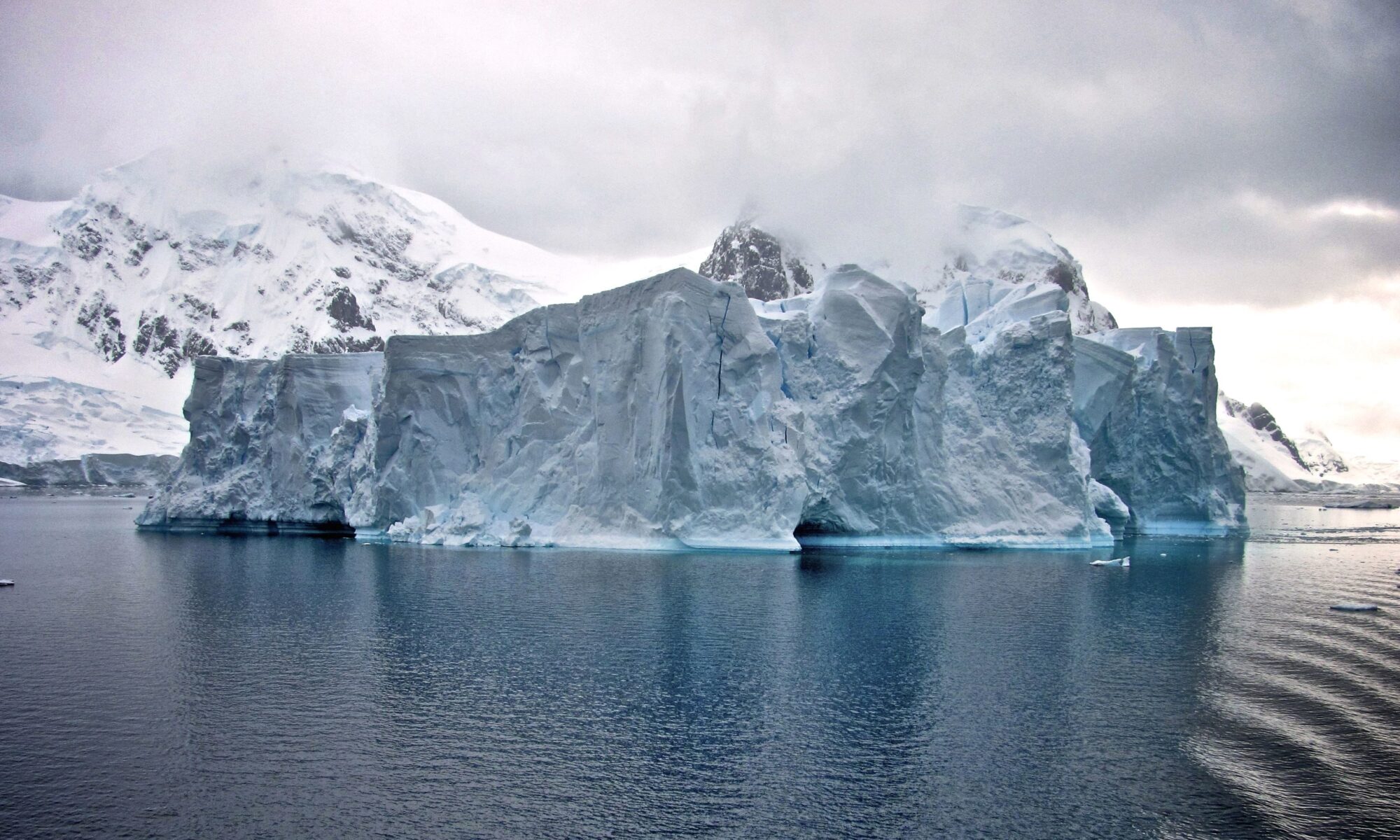Swiss, 1766–1843
View of the Glacier des Bois and the Needles of Charmoz from the arch, called the Cap, 1799
Colored etching, 14 ¼ x 19 in. (36.2 x 48.7 cm)
Bibliothèque publique et universitaire de Genève
Jean-Antoine Linck was among a growing number of artists who specialized in painting views of ice-capped mountains. Prints of their work, published widely in magazines and sold in shops, contributed to the popularity of alpine peaks.
In this view of the Mer de Glace (once called Glacier des Bois), Linck includes two well-dressed British tourists who use a telescope to marvel at the landscape. He heightens feelings of awe by selecting a vantage point at the mouth of an arch, which dramatically frames the structure and luminosity of ice.

Dr. Samuel Nussbaumer, View of the Glacier des Bois and the Needles of Charmoz from the arch, called the Cap, 2005
Two hundred years later, this view has drastically changed. The Mer de Glace, once 7.5 miles (12 km) long and encompassing almost 20 square miles (32 sq. km), has receded by more than a mile (2 km). Dr. Samuel Nussbaumer, a geoscientist affiliated with the World Glacier Monitoring Service (WGMS) at the University of Zurich, has documented many such examples of glacier recession by comparing early artworks with his own photographs captured at the same viewpoint.
The works of early artists, in addition to reminding the public about the wondrous quality of glaciers, now provide natural scientists with valuable information for tracking the loss of ice, helping them determine the fluctuations of glacial length and mass before recorded measurements began at the end of the nineteenth century.

